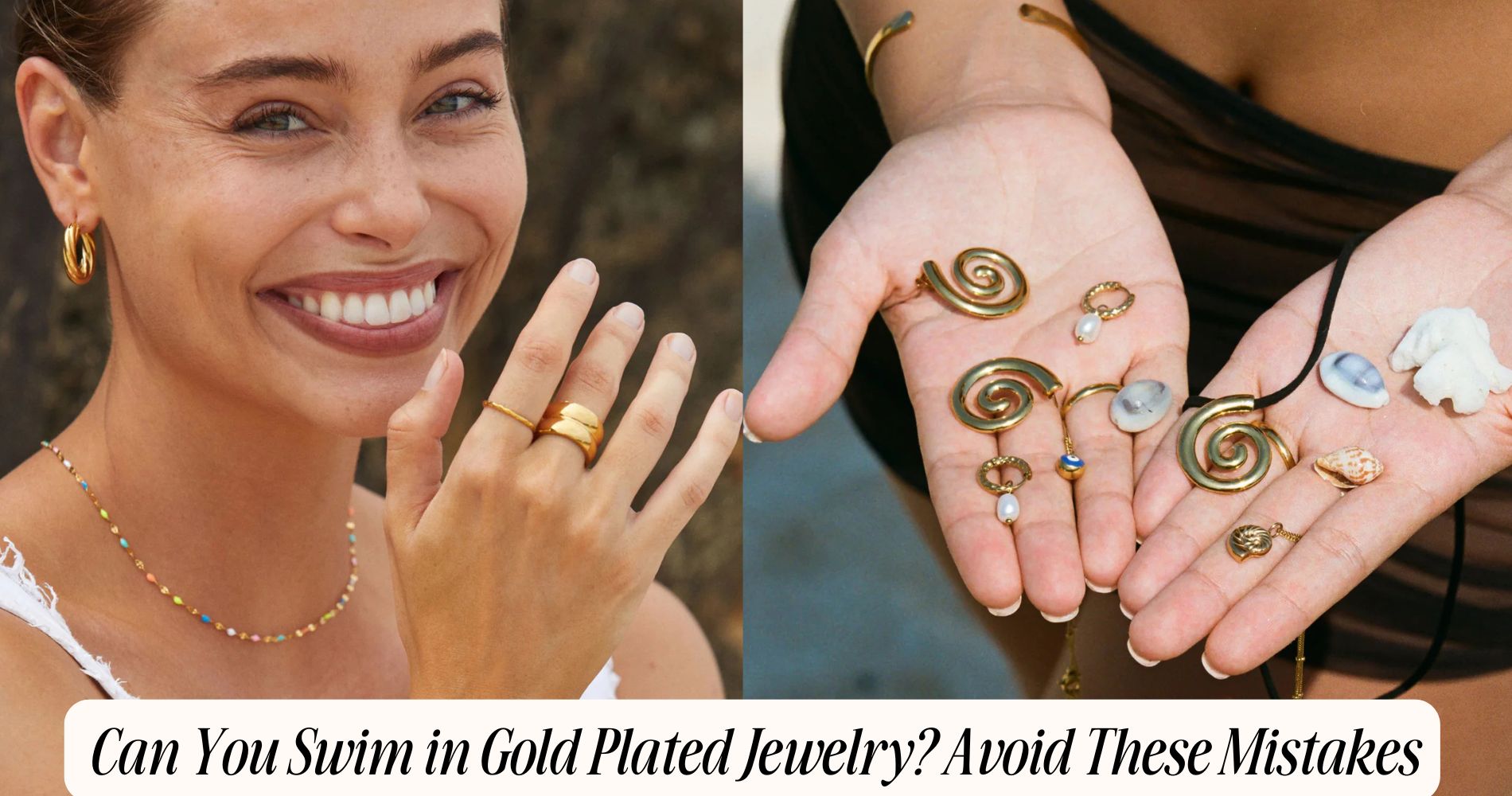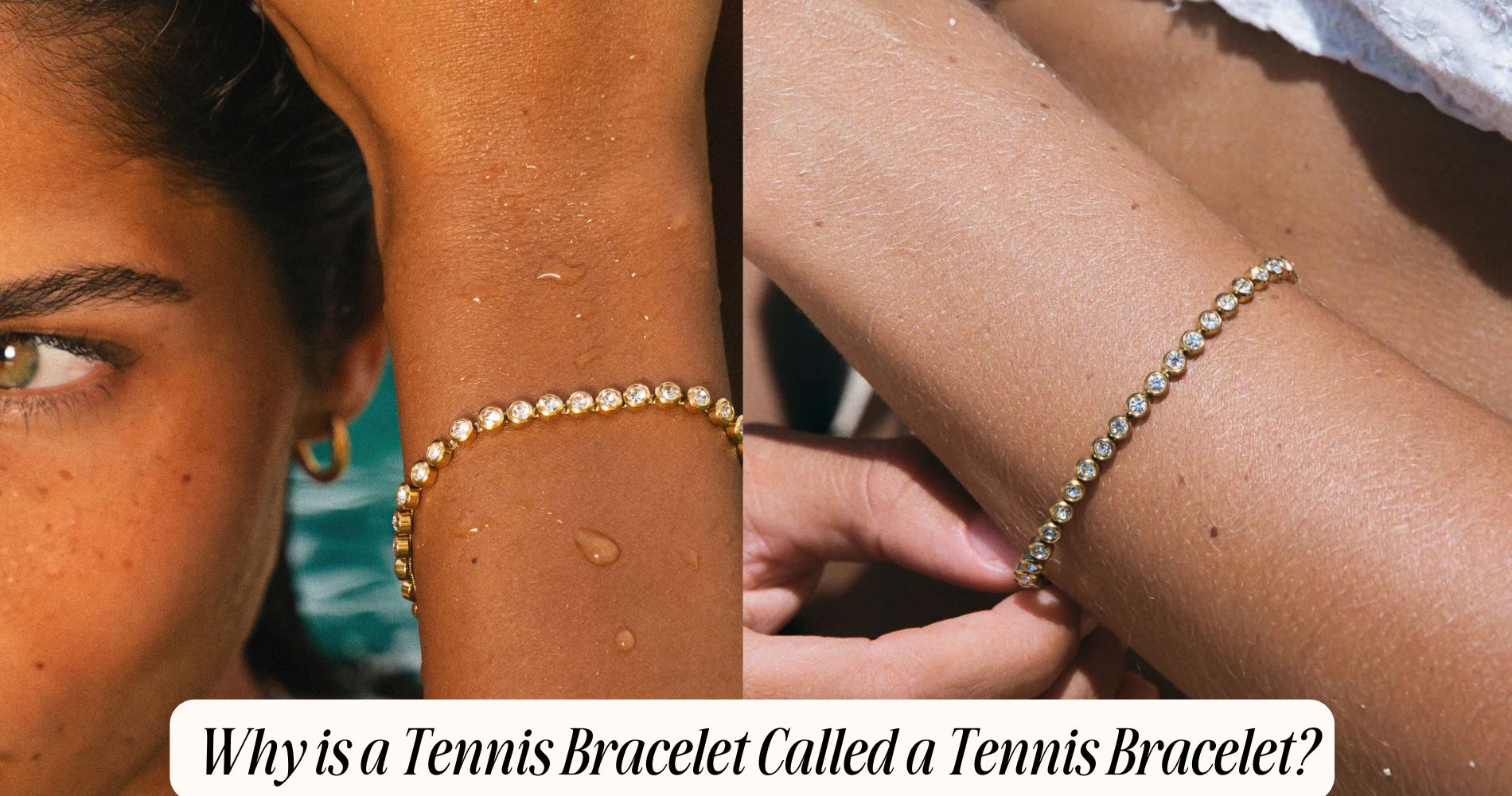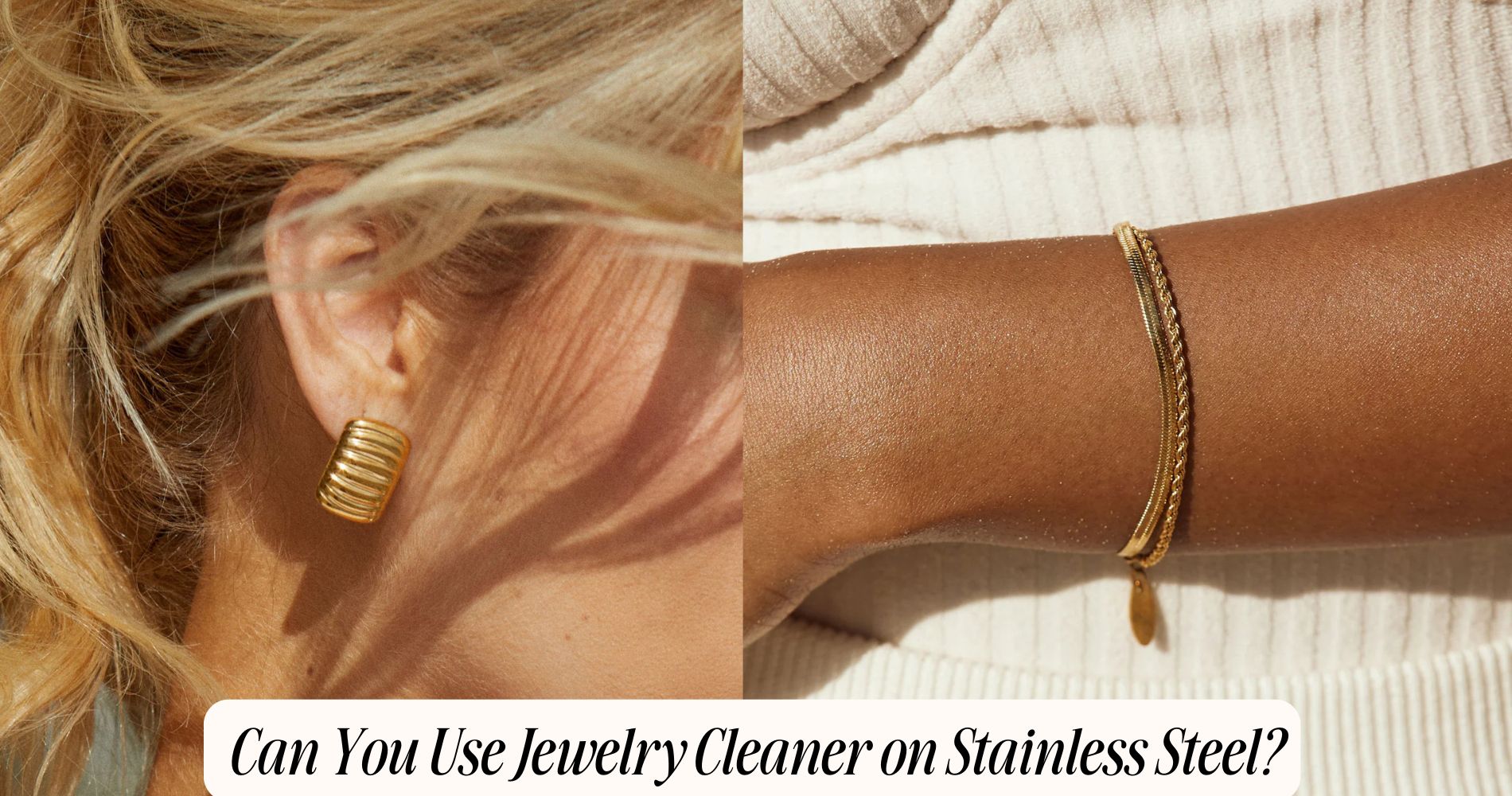
Can You Swim in Gold Plated Jewelry? Avoid These Mistakes
Can you swim in gold-plated jewelry? The short answer is no, as doing so can cause serious damage to your pieces. Chlorine and saltwater can dull the shine and even cause the delicate gold layer to peel away. Hot water weakens the plating adhesive, while minerals in hard water lead to discoloration over time. To keep your jewelry looking its best, always remove it before swimming and rinse it gently if it gets wet. For more timeless pieces, explore our Everyday Gold Necklace collection. Stay tuned for more essential care tips!
Understanding Gold Plated Jewelry
When you explore the world of gold plated jewelry, you'll discover a fascinating blend of beauty and craftsmanship. Gold plating involves applying a thin layer of gold onto a base metal, enhancing its aesthetic appeal without the hefty price tag of solid gold.
There are several gold plating techniques, such as electroplating and mechanical plating, each impacting the final product's quality and durability.
Electroplating, the most common method, uses electrical currents to bond the gold to the metal. This technique allows for a more uniform and thicker gold layer, enhancing jewelry durability.
On the other hand, mechanical plating relies on physical agitation to deposit gold, often resulting in a thinner layer that may wear off more quickly.
Understanding the thickness of the gold layer is vital, as it directly affects how long your jewelry will last. Generally, thicker plating means increased durability, but it's important to take care of your pieces to prolong their lifespan.
Avoid exposing your gold plated jewelry to harsh chemicals or extreme conditions, ensuring that the beauty and craftsmanship shine through for years to come.
Risks of Swimming With Jewelry
When you swim with gold plated jewelry, you risk water damage that can dull its shine and weaken its structure.
Chlorine, commonly found in pools, can interact with the metal and cause discoloration or even peeling of the plating.
It's crucial to reflect on these factors before taking a dip with your favorite pieces.
Water Damage Effects
Swimming with gold plated jewelry can pose significant risks due to water damage effects. When exposed to water, the thin layer of gold can begin to wear down, leading to tarnishing and discoloration. This deterioration occurs faster with prolonged water exposure, especially in chlorinated or saltwater environments.
Additionally, moisture can seep into the tiny crevices of your jewelry, creating an inviting environment for corrosion. This not only damages the aesthetic appeal but also compromises the structural integrity of the piece.
If you notice any discoloration or dullness after swimming, it's a sign that your jewelry requires immediate attention.
To maintain your jewelry, it's essential to remove it before swimming. Regular cleaning with a soft cloth can also help minimize the effects of water exposure.
Make sure to store your pieces properly, away from humidity and moisture to prolong their life.
Chlorine Interaction Risks
How can chlorine wreak havoc on your gold plated jewelry? When you plunge into a chlorinated pool, chlorine exposure can greatly diminish your jewelry's longevity.
Gold plating isn't solid gold; it's a thin layer of gold over another metal. Chlorine can cause this layer to wear down, leading to tarnishing and discoloration.
If you frequently swim with your jewelry, you might notice that it loses its luster and shine much quicker than expected. The harsh chemicals in chlorine can react with the base metal beneath the gold, resulting in further damage.
This not only affects the appearance but also the structural integrity of your pieces. Additionally, the roughness of pool surfaces can scratch your jewelry, compounding the effects of chlorine.
Over time, these interactions can lead to peeling and flaking of the gold layer, making your beautiful pieces look dull and unappealing.
To preserve your jewelry's beauty and guarantee its longevity, it's best to remove it before swimming. This simple step can save you from costly repairs or replacements down the line, allowing you to enjoy your sparkling adornments for years to come.
Common Mistakes to Avoid
While enjoying the allure of gold-plated jewelry, it's crucial to steer clear of common pitfalls that could diminish its beauty and longevity. One significant mistake is exposing your jewelry to harsh chemicals, like chlorine or saltwater. Always remember that these substances can tarnish or wear down the gold plating, leading to a dull appearance.
Another common care mistake is neglecting to remove your jewelry before engaging in physical activities or showering. Sweat and soap can create a film that dulls the shine, so it's best to take your pieces off beforehand.
Additionally, storing your jewelry improperly can cause scratches and tangling. Use a soft cloth and a designated jewelry box to maintain its pristine condition.
Don't forget to clean your gold-plated jewelry regularly but avoid abrasive cleaners. A gentle wipe with a soft, damp cloth is usually sufficient.
Finally, be cautious with the frequency of wear. Over time, even the best care can lead to fading, so rotate your pieces to prolong their life. By avoiding these mistakes, you can enjoy your gold-plated jewelry for years to come.
Choosing the Right Time to Swim
When considering a dip in the pool or ocean, timing can greatly impact your experience, especially if you're wearing gold-plated jewelry. Choosing the right swimming occasions is essential for protecting your jewelry and ensuring it lasts.
For instance, avoid swimming immediately after applying sunscreen or lotions. These products can create a barrier that may lead to tarnishing or discoloration on your gold-plated pieces.
Additionally, think about the time of day. Swimming during peak sunlight can increase the risk of damage to your jewelry. The sun's rays can cause the plating to fade more quickly. If you plan to swim, consider doing so in the early morning or late afternoon when the sun isn't as harsh.
Moreover, be mindful of the water temperature. Swimming in extremely hot water, like a hot tub, can accelerate the wear on your jewelry. Always opt for cooler waters when wearing gold-plated items.
Water Types and Their Effects
Water quality plays an essential role in the longevity of your gold-plated jewelry. Different water types can have varying effects on your pieces, and understanding these nuances can help you protect your investment.
First, consider the mineral content in the water. Hard water, which contains high levels of calcium and magnesium, can lead to a dull appearance on your jewelry over time. These minerals may create a film that dulls the shine of your gold plating.
On the other hand, soft water, lacking these minerals, is gentler on your jewelry but may not rinse away soap and chlorine as effectively.
Next, think about water temperature effects. Hot water can cause the adhesive used to bond the gold plating to the base metal to weaken, leading to peeling or flaking.
Conversely, cold water is less likely to cause damage, but prolonged exposure in any temperature can still wear down the plating.
Best Practices for Jewelry Care
To keep your gold plated jewelry looking its best, regular cleaning is essential.
You should store your pieces in a cool, dry place and avoid exposing them to harsh chemicals that can damage the finish.
Regular Cleaning Techniques
Keeping your gold-plated jewelry looking its best requires regular care and attention. To maintain its shine, start by using mild cleaning solutions. A gentle mix of warm water and a few drops of dish soap works wonders. Soak your jewelry for a few minutes before gently scrubbing it with a soft-bristle toothbrush. This helps remove dirt and oils without damaging the plating.
After cleaning, rinse your pieces under lukewarm water to wash away any soap residue. Pat them dry with a soft, lint-free cloth—never rub, as this could scratch the surface.
For regular maintenance, avoid exposing your jewelry to harsh chemicals, such as perfumes or cleaning products. A good practice is to store your jewelry in a cool, dry place, away from direct sunlight. This helps prevent tarnishing and damage.
Additionally, consider a periodic deep clean using specialized jewelry cleaning solutions designed for gold-plated items. Always follow the manufacturer's instructions to avoid unintentional harm.
Safe Storage Solutions
Proper storage is essential for preserving the beauty and longevity of your gold-plated jewelry. To guarantee your pieces remain in pristine condition, consider implementing effective jewelry organization techniques.
Start by investing in high-quality storage containers designed specifically for jewelry. Look for options that have compartments or padding to keep your items separate and protected from scratches.
Avoid tossing your gold-plated jewelry into a drawer or box without any organization. Instead, use soft-lined trays or individual pouches to minimize contact between pieces. This prevents tarnishing and wear, especially on delicate surfaces.
If you have necklaces, consider using a jewelry stand or a hanging organizer to avoid tangling and damage.
Humidity can also be a foe for your gold-plated items. Store your jewelry in a cool, dry place, and consider silica gel packets in your containers to absorb moisture.
Remember to keep your storage containers closed when not in use to protect against dust and environmental factors.
Avoiding Harsh Chemicals
When it comes to maintaining the luster of your gold-plated jewelry, steering clear of harsh chemicals is a key practice. Chemical exposure can greatly diminish the shine and integrity of your pieces. It's important to avoid products that contain strong detergents, bleach, or ammonia, as these can erode the delicate gold layer over time.
For effective jewelry maintenance, always read the labels of any cleaning products you intend to use. Opt for gentle, pH-balanced solutions specifically designed for jewelry. If you're unsure, a simple mixture of mild soap and water will usually suffice.
When cleaning your pieces, use a soft cloth or a microfiber cloth to gently wipe away dirt and oils.
Additionally, be cautious when applying lotions, perfumes, or hair products; these can contain chemicals that might tarnish your jewelry. Always allow these products to dry before putting on your gold-plated accessories.
Signs of Damage to Watch For
As you examine your gold-plated jewelry, it's crucial to look out for signs of damage that may compromise its appearance and longevity. One of the first indicators to check is the surface for any scratch indicators. Even minor scratches can disrupt the gold layer, exposing the base metal underneath, which can lead to tarnishing over time.
Next, pay attention to the watch functionality if your jewelry includes a watch. If the watch starts to lose time or stops functioning altogether, it could be a sign that moisture has seeped in, potentially damaging the internal mechanics.
Additionally, look for any discoloration or fading in the gold plating. If you notice any areas that appear dull or have lost their shine, it might indicate that the gold layer is wearing off.
Lastly, inspect the clasps and connectors for any signs of bending or breakage. Weak clasps can lead to loss, and damaged connectors can compromise the integrity of the piece.
Cleaning Your Jewelry After Swimming
After enjoying a revitalizing swim, it's important to clean your gold-plated jewelry to prevent any potential damage from chlorine or saltwater. Chlorine can cause tarnishing, while saltwater may lead to corrosion.
To maintain your jewelry's luster, start by rinsing it under lukewarm water to remove any residues. Avoid hot water, as it can weaken the adhesive that holds the plating.
Next, use a soft, lint-free cloth to gently wipe the jewelry. This helps in removing any remaining moisture and dirt without scratching the surface. If you notice stubborn residues, opt for a mild soap solution, mixing a few drops of gentle dish soap with water. Soak your jewelry briefly, then use the cloth to clean it gently.
After cleaning, make sure to thoroughly dry your jewelry with a clean cloth. This step is essential for effective jewelry maintenance, as moisture can lead to further tarnishing.
Alternatives to Gold Plated Jewelry
Exploring alternatives to gold-plated jewelry opens up a world of options that can suit various styles and budgets. If you're looking for durability and elegance, consider solid silver alternatives.
Sterling silver, for example, offers a timeless appeal and can withstand daily wear much better than gold plating. Its shine is enchanting, and it can be easily polished to maintain its luster.
For those seeking more playful or trendy options, costume jewelry is a fantastic choice. This type of jewelry often features bold designs and vibrant colors, allowing you to express your personality without a hefty price tag.
You can find costume pieces adorned with crystals, beads, and intricate designs that make a statement.
If hypoallergenic properties are essential for you, look for jewelry made from stainless steel or titanium. These materials provide a chic look while reducing the risk of skin irritation.
Ultimately, whether you opt for silver alternatives or the fun allure of costume jewelry, you'll find choices that fit your style and budget. Embracing these options can elevate your jewelry collection while avoiding the pitfalls associated with gold plating.
Long-Term Care Tips
When investing in jewelry, whether it's gold-plated pieces or durable alternatives, proper long-term care is vital for maintaining their beauty and longevity.
To enhance the long-term durability of your gold-plated jewelry, store it in a cool, dry place, away from direct sunlight. Use a soft cloth or pouch to prevent scratches and tarnishing.
Regular maintenance frequency is important; clean your jewelry every few weeks with a gentle soap solution and a soft brush. Avoid harsh chemicals, as they can strip the plating and damage the finish.
Additionally, you should remove your jewelry before swimming, showering, or exercising to prevent exposure to moisture and sweat, which can accelerate wear.
Consider rotating your pieces to minimize wear on any single item. If you notice any discoloration or wear, don't hesitate to consult a professional jeweler for re-plating or repairs.
Finally, keep an eye on the clasps and links to guarantee they remain secure. By following these long-term care tips, you can extend the lifespan of your gold-plated jewelry and keep it looking stunning for years to come.
Frequently Asked Questions
Can Gold Plated Jewelry Tarnish in Chlorinated Water?
Yes, gold plated jewelry can tarnish with chlorine exposure. To maintain its shine, practice proper jewelry care by removing your pieces before swimming. This prevents damage and prolongs the life of your treasured accessories.
Is It Safe to Wear Gold Plated Jewelry Every Day?
Wearing gold plated jewelry daily can be safe, but proper care is essential. Avoid exposure to water, chemicals, and harsh environments to maintain its appearance. Regular cleaning and storage can greatly extend your jewelry's lifespan.
What Should I Do if My Jewelry Turns Green?
If your jewelry turns green, don't panic. Clean it gently with mild soap and water. For green jewelry care, avoid moisture and store pieces separately. Following these jewelry cleaning tips will help maintain their shine.
Can Gold Plated Jewelry Cause Skin Irritation?
Yes, gold plated jewelry can cause skin irritation for some people. If you have skin sensitivity or a history of allergic reactions, it's wise to monitor how your skin reacts after wearing the jewelry.
Conclusion
To sum up, while it might be tempting to wear your gold-plated jewelry while swimming, it's best to avoid it to prevent damage. By understanding the risks and recognizing the signs of wear, you can keep your jewelry looking its best. Remember to clean your pieces thoroughly after exposure to water and consider alternatives for aquatic activities. With proper care and attention, you can extend the life of your jewelry and enjoy it for years to come.
























Leave a comment
This site is protected by hCaptcha and the hCaptcha Privacy Policy and Terms of Service apply.